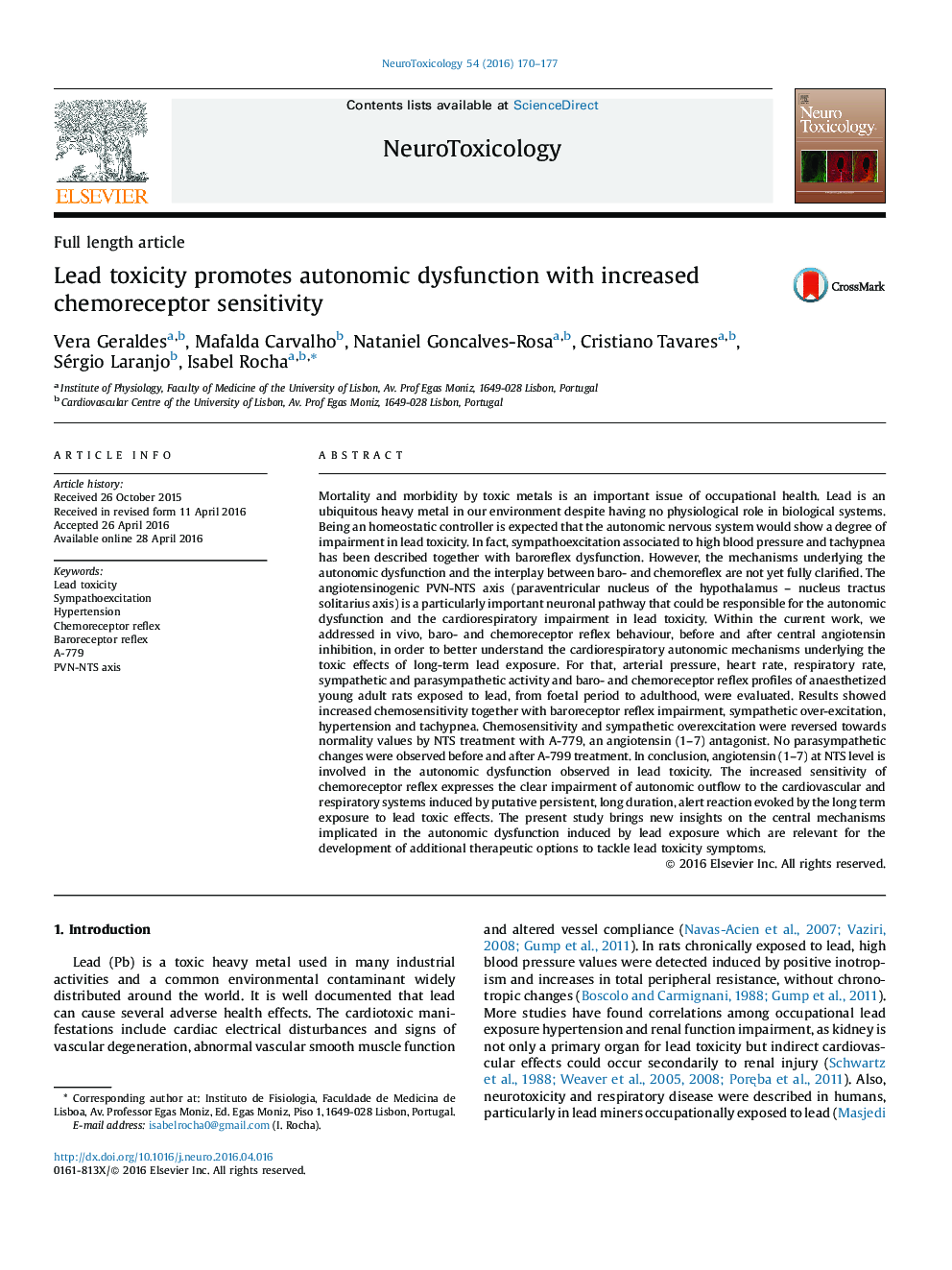| کد مقاله | کد نشریه | سال انتشار | مقاله انگلیسی | نسخه تمام متن |
|---|---|---|---|---|
| 5854742 | 1562040 | 2016 | 8 صفحه PDF | دانلود رایگان |
- Autonomic function in chronic lead exposure from foetal period.
- Increased chemosensitivity, baroreflex impairment, hypertension and tachypnea.
- Angiotensin (1-7) receptor MAS blockade restored the chemoreflex response.
- MAS receptor modulate differently the cardiovascular and the respiratory component.
- Central mechanisms hypothesis on the autonomic dysfunction induced by lead exposure.
Mortality and morbidity by toxic metals is an important issue of occupational health. Lead is an ubiquitous heavy metal in our environment despite having no physiological role in biological systems. Being an homeostatic controller is expected that the autonomic nervous system would show a degree of impairment in lead toxicity. In fact, sympathoexcitation associated to high blood pressure and tachypnea has been described together with baroreflex dysfunction. However, the mechanisms underlying the autonomic dysfunction and the interplay between baro- and chemoreflex are not yet fully clarified. The angiotensinogenic PVN-NTS axis (paraventricular nucleus of the hypothalamus - nucleus tractus solitarius axis) is a particularly important neuronal pathway that could be responsible for the autonomic dysfunction and the cardiorespiratory impairment in lead toxicity. Within the current work, we addressed in vivo, baro- and chemoreceptor reflex behaviour, before and after central angiotensin inhibition, in order to better understand the cardiorespiratory autonomic mechanisms underlying the toxic effects of long-term lead exposure. For that, arterial pressure, heart rate, respiratory rate, sympathetic and parasympathetic activity and baro- and chemoreceptor reflex profiles of anaesthetized young adult rats exposed to lead, from foetal period to adulthood, were evaluated. Results showed increased chemosensitivity together with baroreceptor reflex impairment, sympathetic over-excitation, hypertension and tachypnea. Chemosensitivity and sympathetic overexcitation were reversed towards normality values by NTS treatment with A-779, an angiotensin (1-7) antagonist. No parasympathetic changes were observed before and after A-799 treatment. In conclusion, angiotensin (1-7) at NTS level is involved in the autonomic dysfunction observed in lead toxicity. The increased sensitivity of chemoreceptor reflex expresses the clear impairment of autonomic outflow to the cardiovascular and respiratory systems induced by putative persistent, long duration, alert reaction evoked by the long term exposure to lead toxic effects. The present study brings new insights on the central mechanisms implicated in the autonomic dysfunction induced by lead exposure which are relevant for the development of additional therapeutic options to tackle lead toxicity symptoms.
Journal: NeuroToxicology - Volume 54, May 2016, Pages 170-177
